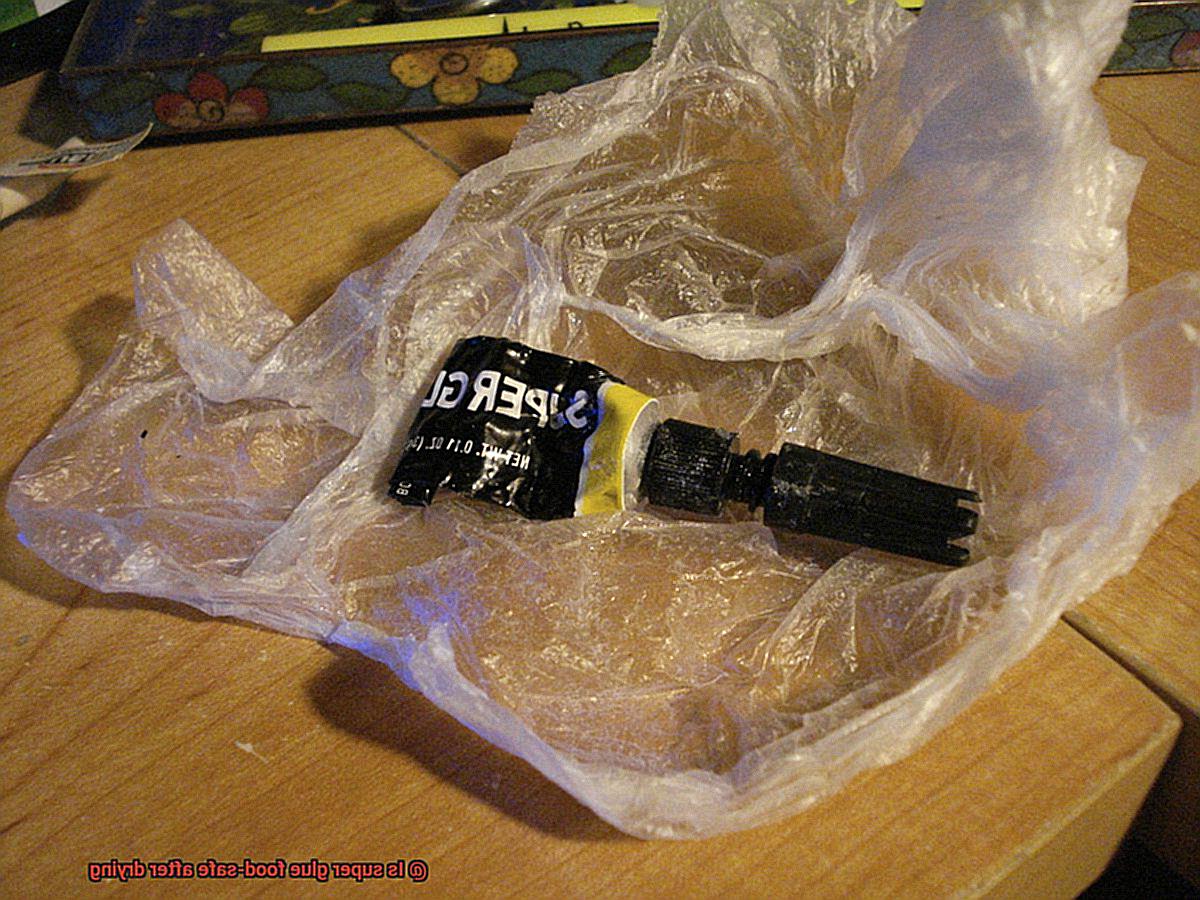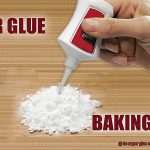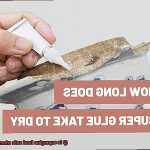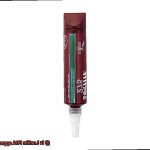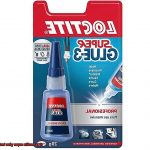Ready to dive into the intriguing world of super glue and its compatibility with our favorite meals? We’ve all had those kitchen mishaps that call for a quick fix, and reaching for some trusty adhesive seems like a no-brainer.
But hold up. Before you start sticking things together, it’s important to know whether that super glue could potentially be harmful to our health.
So grab a snack, get comfy, and let’s explore the fascinating realm of adhesives to find out if they can peacefully coexist with our culinary delights once they’ve dried.
What is Super Glue?
Contents
With its rapid drying time, remarkable strength, and ability to bond diverse materials, super glue has become the go-to solution for countless repair and bonding needs. This article delves into the essence of super glue and its wide-ranging applications.
Lightning-Fast Drying and Indomitable Bonding:
Super glue’s standout feature lies in its ability to dry in a flash. Unlike traditional adhesives that test our patience with hours of waiting, super glue can form a bond within seconds or minutes. It is the perfect choice for urgent repairs or time-sensitive projects that demand swift action.
Once cured, super glue creates an indomitable bond capable of withstanding heat, cold, water, and most chemicals.
Versatility in Material Fusion:
Super glue’s versatility shines through its capacity to bond an extensive array of materials. Whether it’s metal, plastic, rubber, ceramic, or fabric, super glue can forge a durable connection. However, it is important to note that different formulations cater to specific surfaces or conditions. Specialized versions are available for porous materials like wood or fabric, ensuring optimal bonding strength for each unique surface.
Applications That Know No Bounds:
Super glue finds its place in a myriad of applications. From household repairs such as fixing shattered ceramics or reattaching loose soles on shoes to industrial uses like assembling electronic components or securing automotive parts, the possibilities are limitless.
Crafters and artists also rely on super glue for intricate projects involving jewelry making, model building, and more.
Food Safety Considerations:
While super glue is generally safe once fully cured, it is crucial to exercise caution when using it on items that may come into contact with food. Ingesting super glue is not intended and can be harmful due to the chemicals involved. Therefore, when repairing kitchenware or utensils, it is recommended to opt for adhesives specifically formulated for food-safe applications.
Is Super Glue Food-Safe After Drying?
Super glue, also known as cyanoacrylate adhesive, is a rockstar when it comes to bonding materials together. However, when it comes to using super glue in food-related applications, there are concerns about its safety after drying. So, is super glue food-safe after drying? Let’s dive into this fascinating topic.
First things first, regular super glue is not designed or approved for direct contact with food. Its main purpose is to create a strong bond between non-porous surfaces like metal, plastic, and ceramics. So if you’re thinking of using regular super glue to fix your favorite coffee mug or seal a crack in a food container, it’s time to reconsider.
When super glue dries, it forms a hard and rigid bond. The adhesive itself is not toxic as long as it remains intact and undisturbed. However, using regular super glue in food-related applications comes with a couple of concerns.
The first concern is chemical leaching. Super glue contains various chemicals that may be harmful if ingested in significant amounts. These chemicals can potentially migrate from the dried glue into the food, especially if the bond is exposed to heat or moisture. Nobody wants unwanted chemicals sneaking into their meals.
The second concern is physical contamination. Even if the chemicals in super glue don’t pose a significant health risk, small particles or flakes of the dried adhesive could break off and mix with food. Imagine biting into a crunchy surprise while enjoying your favorite dish. Not pleasant at all.
But fear not. There are specialized food-grade adhesives available on the market that are explicitly formulated for direct contact with food surfaces. These adhesives have undergone testing to meet specific safety standards and regulations. So if you absolutely need to bond materials in a food-related application, make sure to choose a food-safe adhesive labeled for indirect food contact.
Alternatively, you can explore other options specifically designed for use in food-related applications, such as food-safe epoxy adhesives or silicone-based sealants. These alternatives provide a safer and more reliable solution for all your food bonding needs.
Potential Hazards of Ingesting Super Glue
Today, we’re venturing into a sticky subject that demands our attention: the potential hazards of ingesting super glue. While super glue is a marvel for bonding materials together, it has no place inside our bodies. So, fasten your seatbelts and prepare for a journey through the risks associated with consuming this adhesive dynamo.
The Perilous Path of Digestion:
- The Cyanoacrylate Conundrum: Super glue’s secret weapon lies in cyanoacrylate, a potent ingredient that forms an unyielding bond in the presence of moisture. Regrettably, if swallowed, cyanoacrylate can unleash chaos upon our digestive system.
- Digestive Dilemmas: Ingesting super glue can lead to debilitating blockages or obstructions within our gastrointestinal tract. Imagine this: the glue clings stubbornly to the lining of our digestive system, triggering unpleasant symptoms like nausea, vomiting, excruciating abdominal pain, and the struggle to swallow.
- From Bad to Worse: In severe cases, consuming super glue can unleash a wave of dire complications, including intestinal perforation or chemical burns. Terrifying, isn’t it? That’s precisely why seeking immediate medical help is absolutely critical if you or someone you know accidentally ingests this adhesive calamity.
Treatment and Prevention:
- Miracles of Medicine: The treatment for ingesting super glue depends on the severity of the situation. It may involve removing the glue through endoscopy or even resorting to surgery. Remember, don’t attempt to tackle this sticky quandary alone – consult a medical professional without delay.
- Prevention is Paramount: The best approach is to avoid ingestion altogether. Keep super glue out of reach of children and far away from food or beverages. After all, nobody wants their sandwich to stick together in all the wrong ways.
Finding Food-Safe Adhesives
When it comes to selecting adhesives for food-related applications, safety should be the top priority. The right adhesive can make a significant difference in ensuring the integrity and hygiene of your food products. Let’s explore the key factors to consider when finding food-safe adhesives.
- Temperature Resistance: Food products undergo various temperature fluctuations during processing, storage, and transportation. It is vital to choose an adhesive that can withstand these changes without compromising its bonding strength. Opt for adhesives with high-temperature resistance to ensure the packaging or processing materials remain intact and safe for consumption.
- Moisture Resistance: Food products frequently come into contact with moisture, such as condensation, spills, or inherent moisture content. Moisture can weaken adhesives, leading to product failure or contamination risks. Select adhesives with excellent moisture resistance to ensure your packaging remains secure throughout its shelf life, safeguarding the quality and safety of your food.
- Bonding Strength: The adhesive’s bonding strength plays a crucial role in maintaining the integrity of your food-related applications. Whether sealing packages, assembling equipment, or constructing food processing machinery, a strong bond prevents gaps or openings where bacteria or contaminants can infiltrate. Choose an adhesive with robust bonding strength for added protection against potential hazards.
- Types of Adhesives: There are specific types of adhesives considered safe for direct or indirect contact with food. FDA-approved adhesives for indirect food contact have undergone rigorous testing to ensure they do not pose harm when used as intended. These adhesives are commonly used in food packaging applications where they contact the outer surface of the packaging but not directly with the food product.
- Potential Risks: Using adhesives not formulated for food-related applications can pose significant risks. They may contain harmful chemicals that can leach into the food, compromising safety and potentially causing health issues. Avoid using adhesives like super glue that are not intended for direct contact with food.
To find food-safe adhesives, look for products specifically labeled as such. Check for FDA approval or compliance with regulatory bodies like the European Commission. Consult adhesive manufacturers or suppliers specializing in the food industry for guidance on safe adhesive formulations. Additionally, consider alternative bonding methods like mechanical fasteners or heat sealing to avoid chemical migration risks.
Benefits of Using Food-Safe Adhesives
When it comes to keeping our food safe and secure, every detail matters. That’s why using food-safe adhesives is a crucial step in the packaging and processing of our favorite snacks and meals. These special adhesives are specifically formulated to meet strict regulatory standards and requirements for food handling, ensuring that our food stays safe and free from contamination. But what are the benefits of using these food-safe glues? Let’s dig deeper into this topic.
First and foremost, the safety and integrity of our food products are of utmost importance. Food-safe adhesives are non-toxic and do not contain any harmful substances that can leach into the food. This means that we can enjoy our meals without worrying about any health risks or compromised quality. Whether it’s a sandwich, a bag of chips, or a microwaveable meal, we can trust that the adhesive used in its packaging won’t harm us.
Furthermore, these adhesives offer excellent resistance to moisture, heat, and chemicals commonly found in food environments. Whether it’s oils, fats, acids, or alcohol, food-safe adhesives maintain their adhesive properties even when exposed to these substances. This ensures that our packaging remains intact and prevents any potential contamination or spoilage. Imagine opening a jar of pickles only to find that the lid has come loose due to a weak adhesive. Not only would it be messy, but it could also lead to the growth of bacteria or mold.
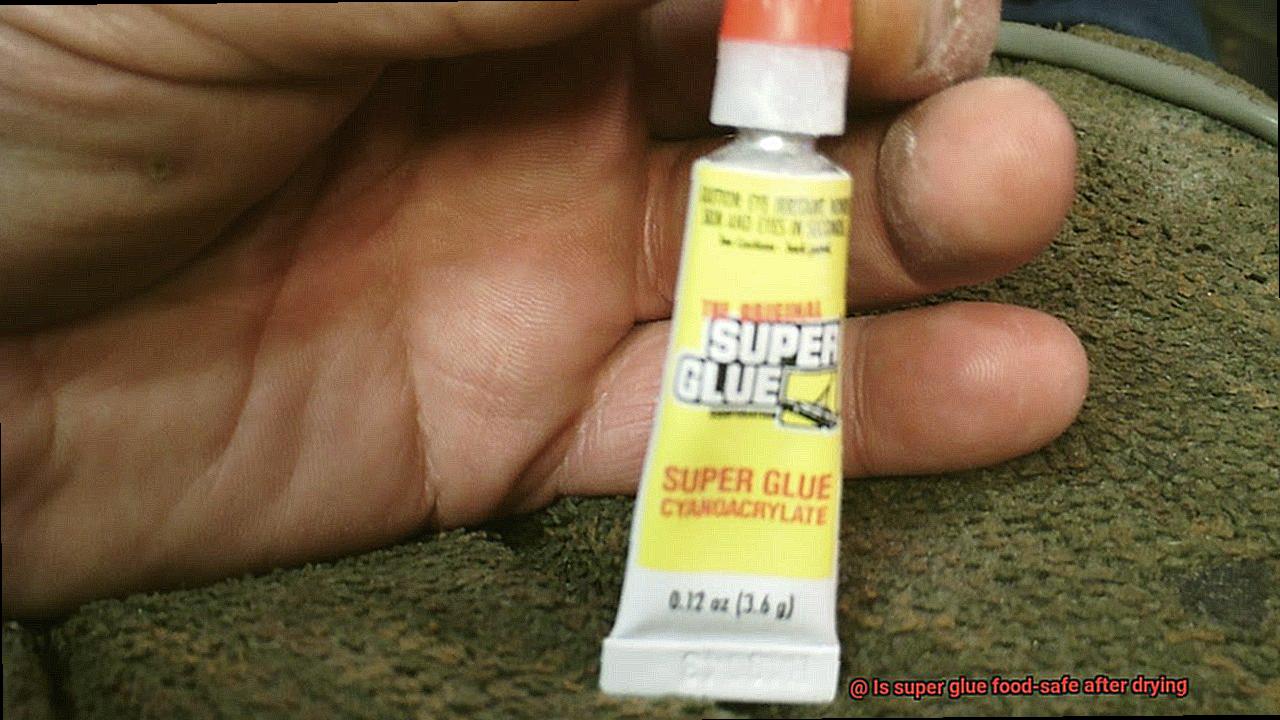
Versatility is another advantage of food-safe adhesives. They can be used in a wide range of applications in the food industry, from sealing cartons to bonding labels on packaging. They can even be used in assembling equipment or repairing utensils used for food processing. The possibilities are endless. Think about all the different types of food packaging you see at the grocery store – boxes, bags, bottles – they all rely on strong adhesives to keep them sealed and secure.
Not only are food-safe adhesives functional, but they also meet aesthetic needs. These adhesives come in various forms, including clear or colored options, allowing businesses to choose the most suitable adhesive for their branding and design needs. This means that our food packaging can look attractive while still maintaining the highest safety standards. The adhesive used on a candy wrapper can be just as eye-catching as the design itself.
Complying with regulations is also a significant benefit of using food-safe adhesives. Many countries have strict guidelines in place regarding the use of adhesives in the food industry. By using compliant adhesives, businesses can avoid penalties and product recalls, ensuring that their operations run smoothly. It’s not just about protecting consumers, but also protecting the reputation and success of food companies.
Types of Food-Safe Adhesives
When it comes to repairing broken plates or sealing food containers, having a reliable and food-safe adhesive is crucial. Not all glues are suitable for use with food, as some contain harmful chemicals that can leach into your food. In this article, we will explore the different types of food-safe adhesives available and provide essential considerations to keep in mind when choosing one.
Epoxy Adhesives: Strength and Versatility
Epoxy adhesives are renowned for their exceptional strength and resistance to chemicals and moisture. They are commonly used in food packaging, where they can bond metal, glass, and plastic securely. With epoxy adhesives, you can have peace of mind knowing that your food will remain safe and secure.
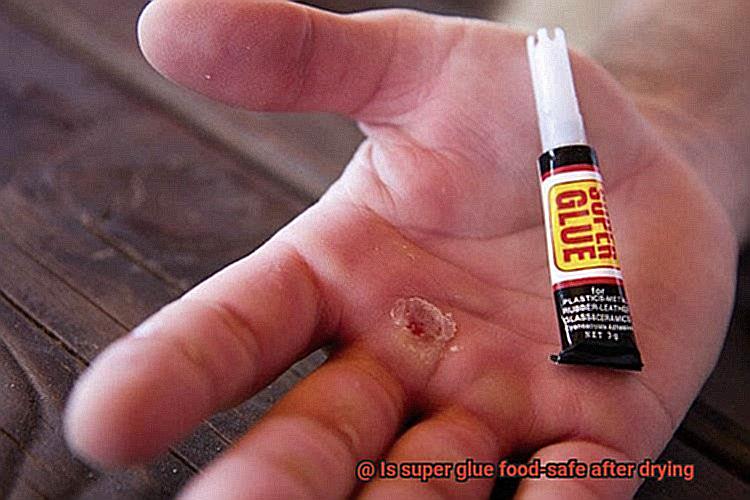
Super Glue: Quick and Reliable

Super glue, also known as cyanoacrylate adhesive, is another type of food-safe adhesive. It dries quickly and forms a strong bond on various surfaces. However, it is essential to look for specifically labeled food-safe super glues to ensure they do not contain any harmful chemicals that could contaminate your food.
Silicone Adhesives: Flexibility and Heat Resistance
Silicone-based adhesives are ideal for applications that require flexibility and resistance to high temperatures. They can withstand extreme heat and cold, making them suitable for use in ovens or refrigerators. With silicone adhesives, you can achieve a secure bond without compromising the safety of your food.
Specialized Food-Grade Adhesives: Tailored Solutions
If you have specific requirements, there are specialized food-grade adhesives available. These adhesives are designed explicitly for sealing or bonding food containers or processing equipment.
They may have additional certifications or approvals from regulatory bodies to ensure their safety in specific environments. When choosing a specialized food-grade adhesive, consider factors such as the specific application, substrate materials, and any industry regulations or certifications required.
Considerations When Choosing:
When selecting a food-safe adhesive, it is crucial to consider several factors. First, determine the specific application for which you need the adhesive. Different adhesives have varying strengths and properties, so choose one that suits your needs best. Consider the substrate materials you will be bonding, as some adhesives work better on certain surfaces than others.
Temperature resistance is another important factor to consider, especially if your application involves exposure to extreme heat or cold. Lastly, ensure that the adhesive you choose meets all necessary regulations and certifications for food-related industries.
Consulting with adhesive experts or suppliers can provide valuable guidance in choosing the right adhesive for your specific needs.
Tips for Choosing the Right Adhesive
Choosing the right adhesive for your project is crucial to ensure a strong and durable bond. With numerous options available, it can be overwhelming to make the right choice. In this blog post, we will provide valuable tips to consider when selecting an adhesive. By following these tips, you can confidently choose the right adhesive for your project and achieve successful results.
Consider the Materials:
Different adhesives work better on certain materials than others. Take into account the type of material you are working with, such as wood, plastic, metal, or fabric. Look for adhesives specifically designed for bonding those materials to ensure a secure bond.
Strength and Durability:
Evaluate the strength and durability requirements of your project. If you need a strong bond that can withstand heavy loads or high temperatures, choose an adhesive known for its strength and durability. For lighter applications, opt for adhesives suitable for that purpose.
Drying Time:
Factor in the drying time of the adhesive. Some adhesives dry quickly, allowing you to move forward with your project faster. Others may require a longer drying time, so consider your time constraints and choose accordingly.
Flexibility:
If your project requires flexibility or movement, select an adhesive that can accommodate this. Certain adhesives have flexibility properties that allow them to withstand bending or stretching without compromising the bond.
Environmental Conditions:
Consider the environmental conditions to which the adhesive will be exposed. Some adhesives are more resistant to moisture, heat, or cold, making them suitable for outdoor or high-temperature applications. Ensure that the adhesive you choose can withstand the conditions it will encounter.
Safety:
Always prioritize safety when choosing an adhesive. Read and follow the manufacturer’s instructions and safety guidelines carefully. Some adhesives may emit fumes during application or require special ventilation. Ensure that the adhesive you choose is safe for your specific project and follow all safety precautions.
Common Uses for Food-Safe Adhesives
Food-safe adhesives are not your average sticky substances. These specialized adhesives are formulated specifically to be safe for use in food-related applications, ensuring that your food remains uncontaminated and free from any gluey mishaps. Let’s dive into the common uses for these remarkable adhesives in the food industry.
First and foremost, the packaging industry relies heavily on food-safe adhesives. These adhesives are used to seal various types of food packaging materials, including paperboard cartons, plastic containers, and metal cans. By forming a strong bond between the layers of packaging, these adhesives keep your favorite snacks fresh and intact during transportation and storage.
But wait, there’s more. Food-safe adhesives also play a crucial role in the production of food processing equipment. From conveyor belts to cutting blades and mixing paddles, these adhesives keep everything running smoothly in the kitchen. With their ability to withstand the harsh conditions of food processing operations – such as exposure to moisture, heat, and cleaning chemicals – these adhesives ensure that your food is prepared safely and efficiently.
Speaking of kitchens, food-safe adhesives are essential in the construction of commercial kitchens and food preparation areas. They are used to bond tiles, countertops, and other surfaces that come into direct contact with food. These adhesives need to be water-resistant and capable of enduring daily wear and tear without losing their grip. With their strong and durable bond, they ensure that your kitchen remains a safe and hygienic environment.
But it doesn’t stop there. Food-safe adhesives also find their way into the manufacturing of food packaging equipment. They ensure that labels stick firmly on packaging materials and keep packages securely sealed. No more peeling labels or accidental openings here. These adhesives provide a reliable solution for keeping your food products properly labeled and protected.
And hey, did you know that you can even use food-safe adhesives for your own DIY projects? If you accidentally break a ceramic plate or a glass jar, these adhesives can come to the rescue. With their safe and proper repair capabilities, you can mend your food-related items with confidence.
h1tbjyd2qjA” >
Also Read: Is Glue Edible? – Glue Things
Conclusion
In conclusion, once super glue has dried, it is generally considered to be food-safe.
The chemical composition of super glue undergoes a transformation during the drying process, forming a hard and inert substance that is unlikely to leach into food. However, it is important to note that not all super glues are created equal.
Therefore, it is crucial to use only food-grade or FDA-approved super glue when repairing items that come into contact with food.

